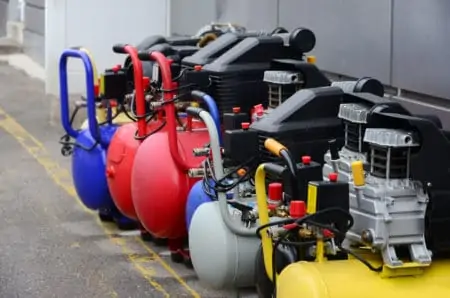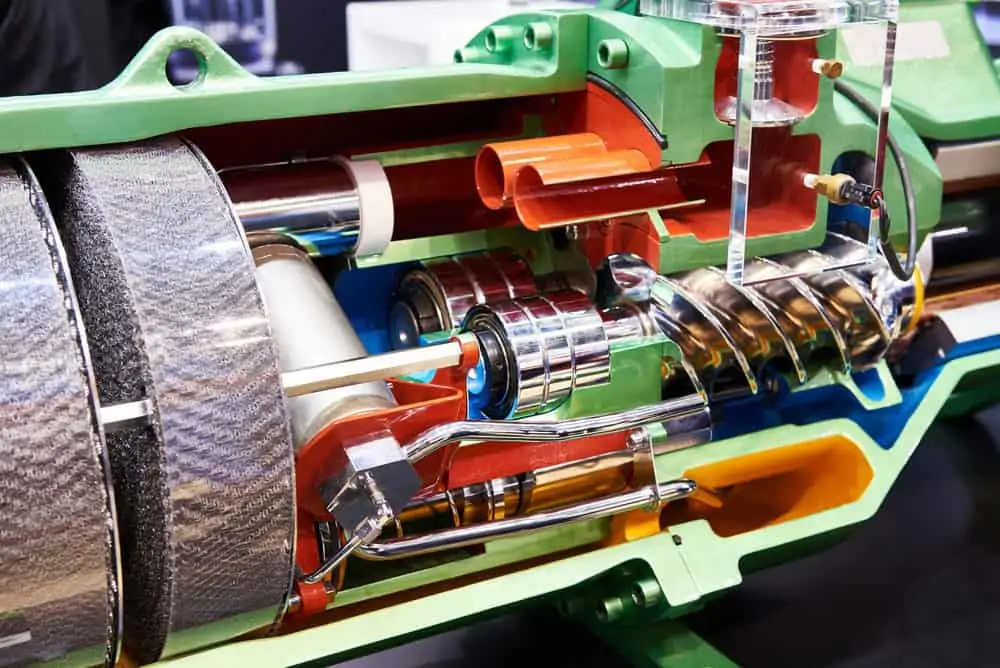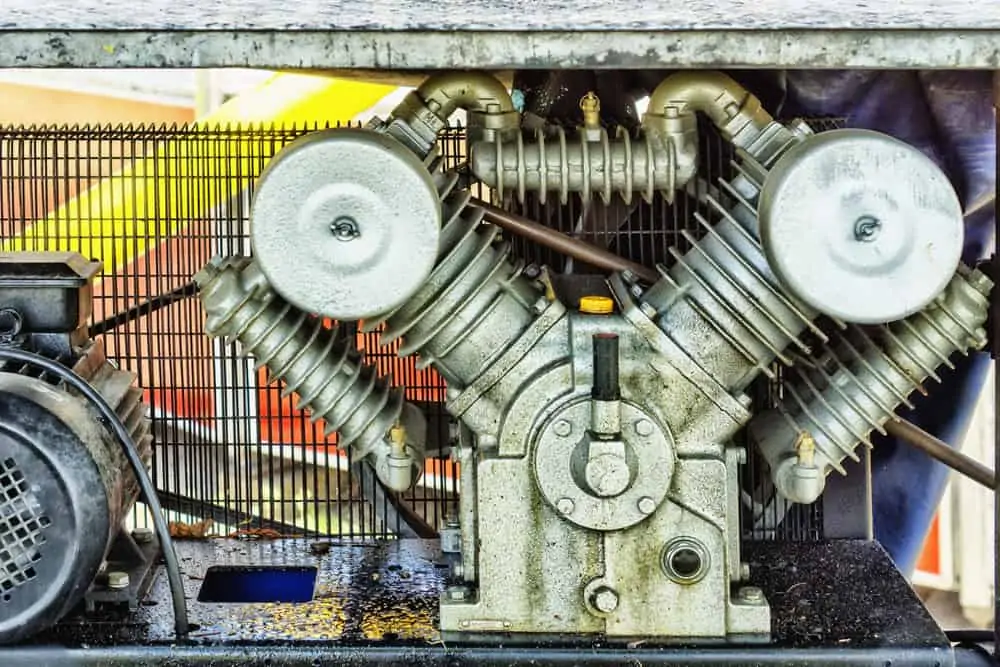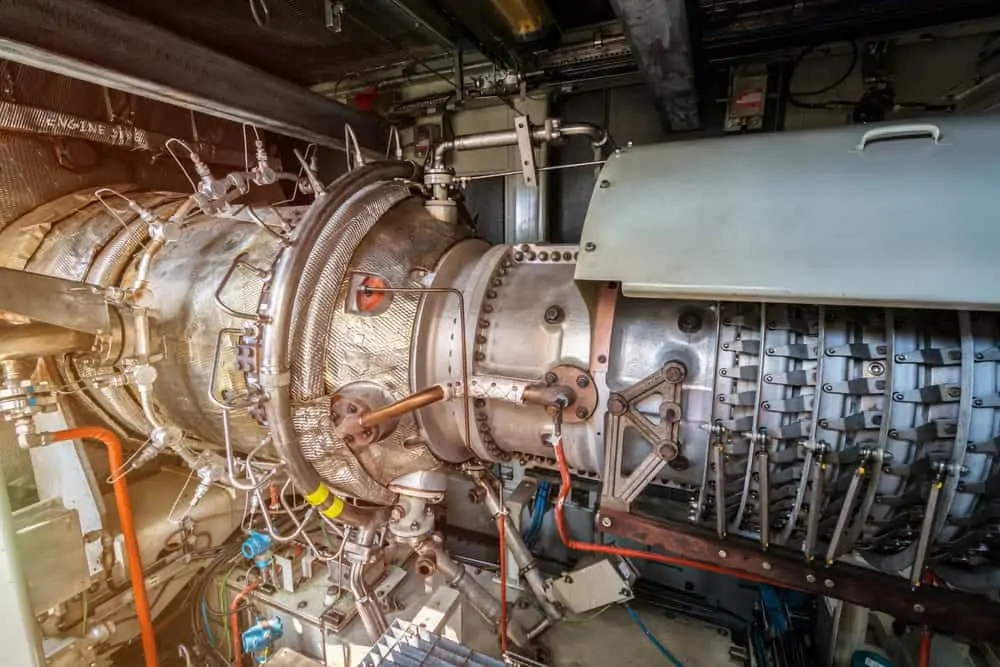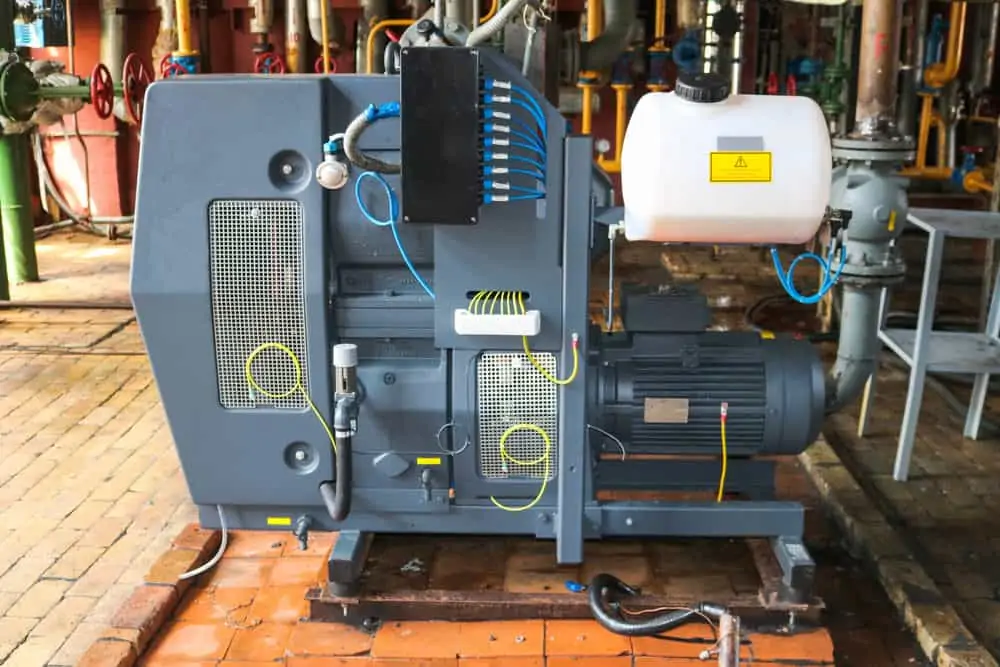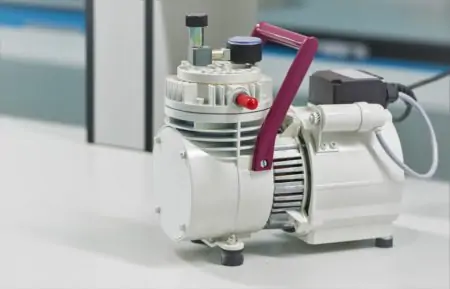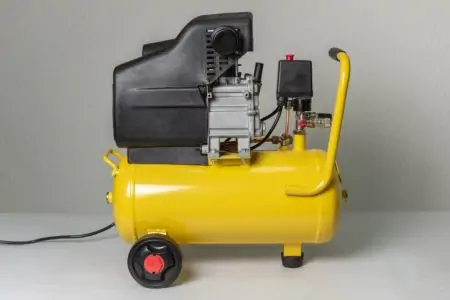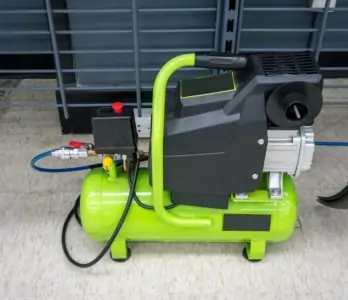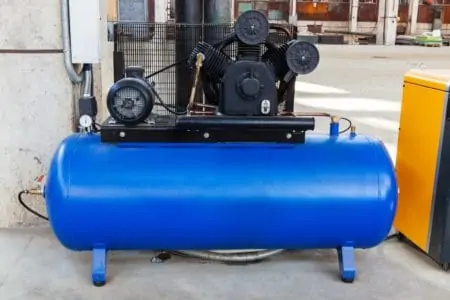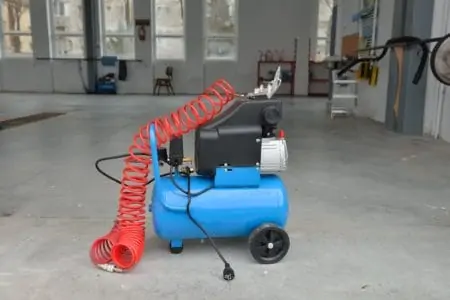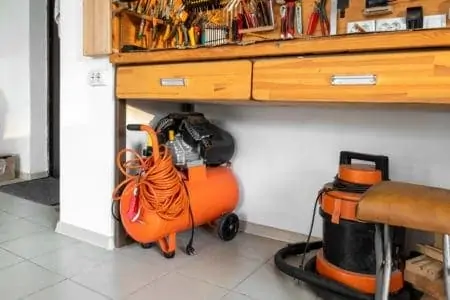Air compressors are a familiar sight in garages, auto-shops, and commercial premises. Many people and industries use them, from your dentist to the children’s entertainer blowing up balloons at your kid’s birthday party.
But not all air compressors are the same. There are different types of air compressors, and they have vastly different applications.
Key Takeaways
- There are 4 types of air compressors: rotary screw, reciprocating, axial, and centrifugal compressors.
- Positive displacement compressors (rotary screw and reciprocating) are suitable for home, auto shop, and construction use.
- Dynamic compressors (axial and centrifugal) are mainly used in industrial plants and aerospace applications.
- Choose the type of air compressor based on your specific needs and budget.
4 Types of Air Compressors
Essentially, there are 4 types of air compressors widely in use today. Each operates on the same principle of pressurizing air, but the way they do this varies enormously.
Positive Displacement Compressors
Positive displacement is an umbrella term used to describe all compressors that use positive air displacement to create pressurized air. In fact, compressors that employ this method vary greatly and use different internal mechanisms to achieve the same results.
As we have said, the core operating principle of an air compressor is to create a supply of compressed air, and each technique does this but by alternative means. Positive displacement compressors do this by drawing air into the machine’s cavity and decreasing the space to create energy.
There are two types of positive displacement air compressors, namely, rotary screw compressors and reciprocating compressors.
1. Rotary Screw Compressors
These compressors are, by far, one of the easiest to take care of. They require minimal maintenance, and thanks to their unique design, they run continuously, making them the ideal compressor for use on large construction.
For this reason, they are typically large machines and unsuitable for domestic use.
Two internal rotary screws spin in opposite directions to create energy, drawing air in and pushing it down the length of the screws and the chamber. As the air traps between the two rotors, it slows and produces increasing amounts of pressure.
Thanks to internal cooling, these compressors can run and run, and they range in potency from 5 horsepower to 350 horsepower. The larger the power output, the bigger the compressor and the storage tank.
Pros
- Great for industrial use.
- Creates extreme pressure.
- Requires less maintenance.
- Designed for continuous use.
Cons
- Specific uses.
- Not for home use.
- Large and bulky machines.
Product Specs
| Applications | Construction, big shops, industrial and commercial. |
| Efficiency rate | Medium |
| Number of compression stages | Single |
| Cooling method | Air, water, or oil |
| Drive method | Motor |
| Lubrication method | Oil or oil-free |
| Price | $$$ |
2. Reciprocating Compressors
Reciprocating compressors are typically smaller than rotary screw models and are more popular with garages and auto-centers, as well as home and hobbyist users. These compressors, unlike the rotary varieties, are designed for limited use and should not run continuously.
They are widely available and typically have wheels for easier maneuvering and a large handle. They come in a variety of capacities ranging from a few gallons up to 60 gallons and more.
This type of air compressor has more mechanical components and, as such, needs more maintenance to keep them in full working order. Typically, the moving parts, like the pump, are lubricated using machine oil to maintain a smooth operation.
A reciprocating compressor uses a piston inside a cylinder, which rises and falls to compress the air in the chamber. As the piston rises, it compels the air towards the exhaust port and then sucks in more air as it falls.
These compressors come in single or multi-stage varieties. While single stage-compressors are effective at completing smaller tasks and projects like woodworking and metalwork, multi-stage models are perfect for construction sites and commercial uses. Auto assembly and repair shops use multi-stage compressors because they can produce up to 30 horsepower.
Pros
- Single or multi-stage.
- Great for home and hobby use.
- Multi-stage ideal for industrial uses.
- Commonly found and popular.
Cons
- Require constant maintenance.
- Limited runtime.
- More moving parts.
Product Specs
| Applications | Construction, home, auto shop, and hobbyist. |
| Efficiency rate | Low to medium |
| Number of compression stages | Single and multi |
| Cooling method | Air or oil |
| Drive method | Motor |
| Lubrication method | Oil or oil-free |
| Price | $ |
Dynamic Compressors
Dynamic compressors draw air in rapidly through rotating fans. This fast airflow generates horsepower. As the air gets trapped within the chamber, it is restricted to increase the kinetic energy, which is then stored as static until needed.
These dynamic compressors are sometimes referred to as turbo compressors, thanks to the rapid intake of air. Unfortunately, their size restricts their usage to large-scale industrial applications such as chemical plants and steelworks.
There are two types of dynamic compressors, namely, axial compressors and centrifugal compressors.
3. Axial Compressors
Axial compressors are highly efficient but incredibly expensive. They are used in high-speed engines on ships and airplanes. Axial compressors work by rotating a large fan, sucking air into the casing at a rapid speed. As the air enters the chamber, it gets forced through a series of stationary fan blades.
This process slows the air’s progress, and as the space becomes smaller, it increases the kinetic energy and pressurizes. It is then delivered through an exhaust port to where it is needed. Thanks to their limited functionality, they are less common than other types of compressors.
Axial flow compressors differ from radial versions in that the flow of air is parallel with the axis rather than perpendicular to the impeller’s axis.
You also find axial compressors in small-scale power stations and the aerospace industry due to their reliability and flexibility during the flight envelope.
The advantage of an axial compressor is that it produces a higher flow rate and a greater pressure ratio, which results in higher fuel efficiency and thrust.
Pros
- Higher efficiency.
- Creates greater thrust.
- Ideal for airplane and ship engines.
- Fuel efficient.
Cons
- Limited uses.
- Expensive.
Product Specs
| Applications | Aircraft and shipping |
| Efficiency rate | High |
| Number of compression stages | Single |
| Cooling method | Air |
| Drive method | Turbine |
| Lubrication method | Oil-free |
| Price | $$$ |
4. Centrifugal Compressors
A spinning impeller draws air into the chamber at a rapid speed and then pushes this air outwards towards the chamber walls using centrifugal force. Imagine a spinning fairground ride, as it throws you outwards, away from the center, and that’s what happens to the trapped air in the casing.
As this air gets forced away from the center, it travels around the casing towards a diffuser. This slows the progress and creates increased pressure, which then gets pushed along the exhaust port. Thanks to the radial flow of the air in the chamber, as it moves perpendicular to the impeller’s axis, this type of compressor is also known as a radial compressor.
This method of air pressurization requires a high-speed electric motor and is favored by HVAC manufacturers thanks to their continuous supply of compressed air for cooling. Many are oil-free and have very few moving parts, making them relatively maintenance-free.
They also produce a higher flow rate than many positive displacement compressors and better energy efficiency.
Pros
- Energy-efficient.
- Relatively maintenance-free.
- Continuous supply.
- Ideal for HVAC systems.
Cons
- Sensitive to gas composition changes.
- Prone to stalling and choking.
- Unsuitable for high compression.
Product Specs
| Applications | HVAC and industrial plants |
| Efficiency rate | High |
| Number of compression stages | Multi |
| Cooling method | Oil and air |
| Drive method | Turbine |
| Lubrication method | Oil-free and oil |
| Price | $ to $$$ |
| Rotary Screw Compressors | Reciprocating Compressors | Axial Compressors | Centrifugal Compressors | |
|---|---|---|---|---|
| Applications | Construction, big shops, industrial and commercial. | Construction, home, auto shop, and hobbyist. | Aircraft and shipping | HVAC and industrial plants |
| Efficiency rate | Medium | Low to medium | High | High |
| Compression stages | Single | Single and multi | Single | Multi |
| Cooling method | Air, water, or oil | Air or oil | Air | Oil and air |
| Drive method | Motor | Motor | Turbine | Turbine |
| Lubrication method | Oil or oil-free | Oil or oil-free | Oil-free | Oil-free and oil |
| Price | $$$ | $ | $$$ | $ to $$$ |
FAQs
The Pressure Is On
Knowing what type of air compressor you want depends on the applications and your budget. If you run a commercial workshop or auto repair center, then a reciprocating compressor or a rotary screw model would be the best choice.
For industrial uses, you need to think big and go for a larger model with higher horsepower. Whichever is right for you, you cannot escape the convenience and multiple uses that air compressors bring to your task.
